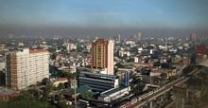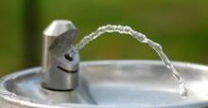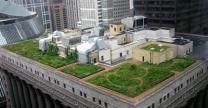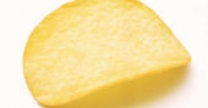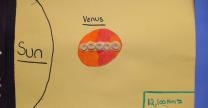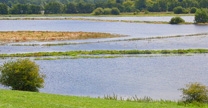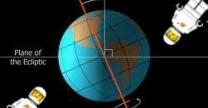NGSS-Aligned Lessons

Assessments in Science Lessons
In this video, NYSCI staff members reflect on using the EQuIP Rubric for Science to identify takeaways from the process.
Making the NGSS Explicit in the Classroom
In this video, NYSCI staff members share strategies for helping students become more familiar with the Next Generation Science Standards.
The Next Generation Science Standards (NGSS) call for significant shifts in the way science is taught and learned. To meet these standards, teachers need high-quality instructional materials and resources that they can use to help their students meet the vision of the NGSS.
Through a project with the New York Hall of Science (NYSCI) and Achieve, Teachers TryScience now features a growing set of resources that demonstrate how existing K-12 science lessons can be evaluated and revised to more closely align to the NGSS, using the Educators Evaluating Quality in Instructional Products (EQuIP) rubric. Using the EQuIP process, NYSCI educators have revised existing lessons, making them more rigorous, engaging, and ultimately more informative for teachers.
To highlight the benefits of iterative, evidence-based evaluation and revision using the EQuIP rubric, each of the lessons are accompanied by an interim version of the lesson as well as the completed EQuIP rubric that shows the feedback and suggestions for improvement that helped educators identify the lesson’s strengths and weaknesses. We encourage teachers to use the EQuIP rubric process to continue to evaluating and refining these exciting lessons, as well as their own materials.
EQuIP Reviewed Lessons
|
Partner Contributed EQuIP-reviewed jul 31 2015
NYSCI
In this lesson, students will use a particulate air pollution model to observe phenomena. They will then plan and carryout a field investigation to observe particulate matter pollution around their school, and design a method to measure air quality and propose ways to improve air quality. They will answer the driving question: How can we accurately assess air quality, in order to design solutions to improve the quality of the air we breathe?
|
Partner Contributed EQuIP-reviewed jun 11 2015
NYSCI
In this lesson, students will use the criteria and constraints they articulated in You Are What You Drink Part 1 to build and evaluate a water filter. They will answer the driving question:
Based on a set of criteria and constraints, how do we build and evaluate a water filter that will lead to an optimized system that meets the needs of clean water for human use and consumption?
|
EQuIP-reviewed jul 09 2015
NYSCI
They will be addressing the driving question: How can human activities affect the environment’s surface temperature? |
Partner Contributed EQuIP-reviewed jun 11 2015
NYSCI
In this lesson, students will use information about the connection between changes in biodiversity and changes in water quality to articulate criteria and constraints for a water filter design. They will answer the driving question:
What factors are considered when designing a water filter in response to a change in biodiversity that affects ecosystem services?
|
|
EQuIP-reviewed jul 09 2015
NYSCI
Students will explore the driving question: Why might the classrooms lights have gone out? |
Partner Contributed EQuIP-reviewed jun 05 2015
NYSCI
In this lesson, students investigate the forces that potentially crush snack foods and then use this information to redesign chip packaging. They then evaluate and redesign the packaging based on testing in order to answer the driving question: What features of lightweight chip packaging minimize crushing during shipping?
|
Partner Contributed EQuIP-reviewed jun 29 2015
NYSCI
In this lesson, students will use information about forces to answer the driving question: What components and materials can be used to create a model chair lift, designed to carry a set of aid materials? |
Partner Contributed EQuIP-reviewed jun 04 2015
NYSCI
In this lesson, students use data related to distances between objects in the solar system to create their own scale model to represent these distances and better understand relationships of objects in the solar system and answer the driving question: How do you study a system that won’t fit in the classroom?
|
|
EQuIP-reviewed jun 29 2015
NYSCI
They will be addressing the driving question: How might a genetic trait affect an organism’s chance of survival? |
Partner Contributed EQuIP-reviewed jun 29 2015
NYSCI
In this lesson, students investigate where their electricity comes from and consider the tradeoffs between different sources of energy. They then design, test, and evaluate wind turbines that can be used to generate electricity to answer the driving question: How can we design a wind turbine that effectively converts one form of energy into another form of energy? |
Partner Contributed EQuIP-reviewed jun 29 2015
NYSCI
In this lesson, students will explore the connection between reforestation and deforestation and greenhouse gases. They’ll do this by collecting data about local trees and analyzing and interpreting data about deforestation and reforestation, which will serve as the example in this lesson of one set of activities that can affect levels of greenhouse gases in the atmosphere. Students will apply these ideas to the construction of a written argument that helps answer the driving question: What happens to carbon dioxide levels in our local community when trees are removed or added? |
Partner Contributed EQuIP-reviewed jun 29 2015
NYSCI
Student will answer the driving question:
What role do different materials play in maximizing energy transfer into a system, and how can we apply this to design a passive solar house? |
|
Partner Contributed EQuIP-reviewed jun 29 2015
NYSCI
Student will answer the driving question:
How can the impact of future flooding events be mitigated through the understanding of floodplains? |
EQuIP-reviewed jun 15 2015
NYSCI
In this lesson students will explore the concept of matter and energy transfers within an ecosystem. Students will build on their prior knowledge of relationships between species and trophic levels. Students will design a food web model, and will continue to revise and add to it throughout the lesson. They will answer the driving question: How do energy and matter move within an ecosystem?
|
EQuIP-reviewed jul 31 2015
NYSCI
The goal of this lesson is to help students understand how relationships between the Earth and the sun give rise to patterns that we observe every day and throughout the year, such as the changing length of the day and the directions of shadows. This lesson also encourages students to investigate the interaction between the earth and sun and the average temperatures in both hemispheres during each season. Students will answer the driving question: Why do our shadows change throughout the day?
|
EQuIP-reviewed jun 15 2015
NYSCI
In this lesson, students will investigate the different organisms found in their local ecosystem (park, schoolyard, etc.), and will use online resources to identify the different species they found. Next, students will collect data on the number of each species present in the ecosystem, and use ratios to estimate their population sizes on a larger scale. They will answer the guiding question: What does biodiversity look like in my local ecosystem? |

